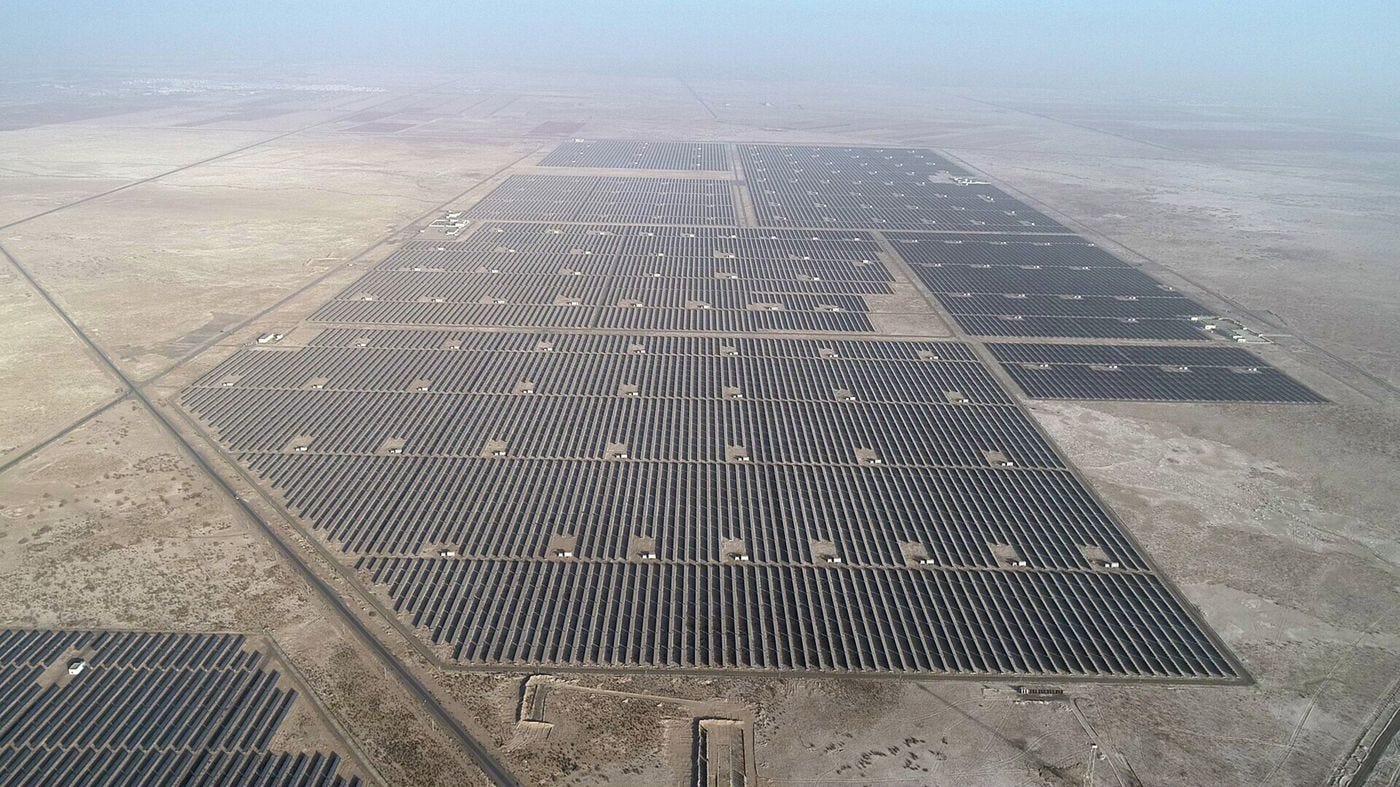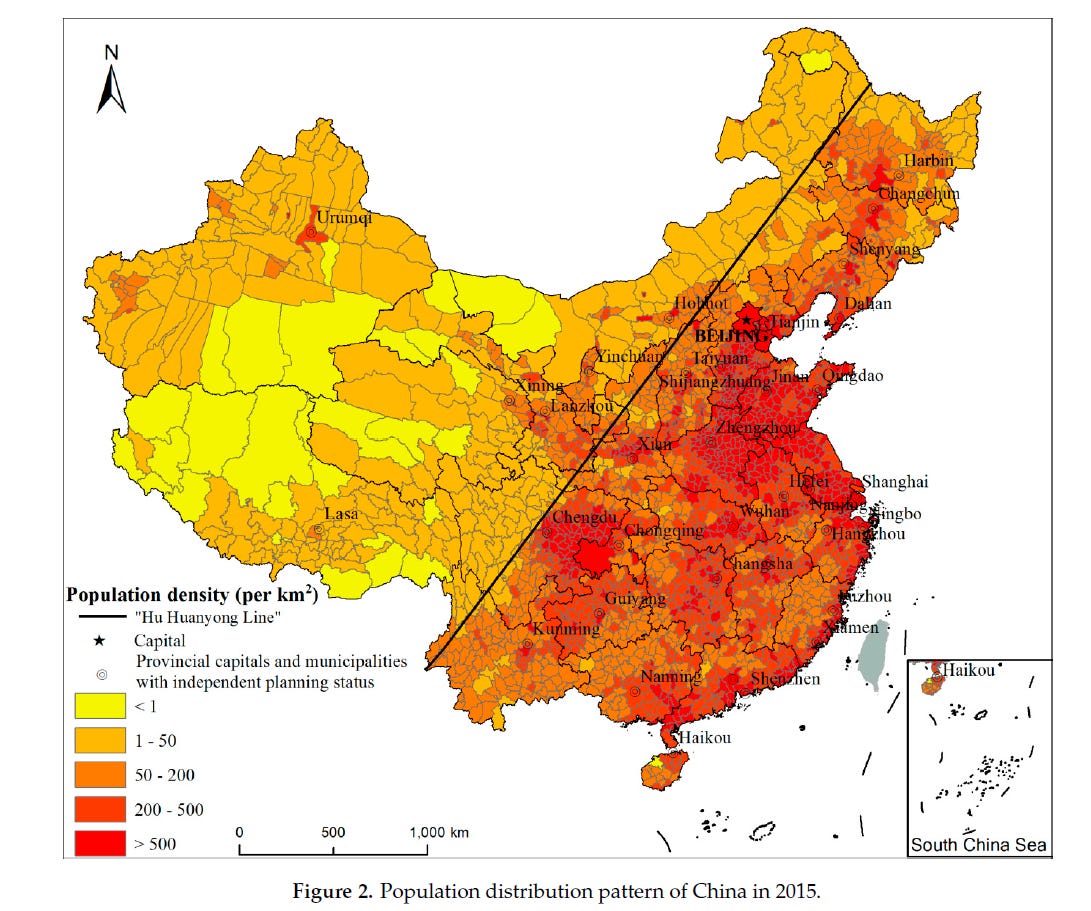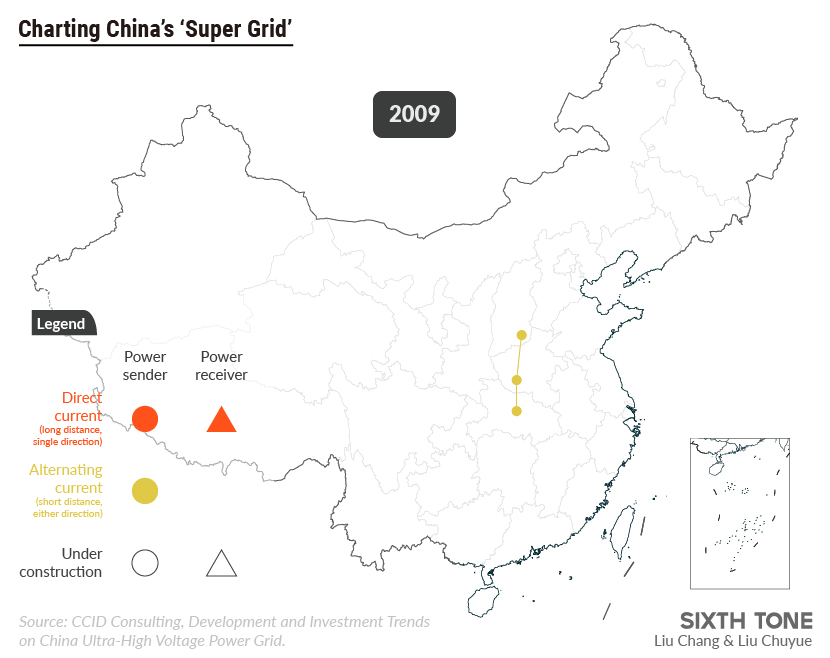This is a hard time to write. My thoughts are with the people suffering from war. But given that fossil fuels have funded the Russian state and military apparatus that launched the invasion of Ukraine, perhaps this time is a reasonable one to engage in thinking through some of the knottier issues of clean electrification. In the end, though, I’m not European nor an expert on European energy systems, so this is not a direct discussion of breaking free from an addiction on of Russian energy (on that, though, see here, here, and here for more).
It is difficult to build things in the United States. Well, except for highways to, in, and for suburbia.1

I’ve already expressed exasperation at a vote in Maine against transmission lines to bring hydroelectricity from Canada into New England, and at complaints in New York against transmission lines to New York City that would similarly bring in hydropower from Canada. And while I know that newsletters are the new blogs and that blogs are essentially places to deliver one’s favorite rants over and over, I’ll spare you. This time.
Hawaii’s state legislature decided to shut down its last coal power plant on Oahu as of September 1, 2022. The plan was simple if novel. A mega-battery would sit on the site of the old coal plant to take advantage of its existing network of power lines. Rather than electricity being produced by burning coal, it would be charged by a number of utility-scale solar installations. However, concerns about specific sites for those solar panels have left it unclear if there will be enough power to keep the battery running at full capacity. The governor created a “powering past coal” task force last March to help speed things up, but concerns remain. If clean power can’t make enough electricity for the island, then the utility will replace the coal plant’s generation with oil.2 As Julian Spector of Canary media wrote:
The fallback plan of burning more oil in place of coal amounted to “going from cigarettes to crack,” Griffin declared.
Building things in the United States remains hard because people tend to like things the way that they are and disturbing the status quo, even if it’s just putting solar panels on your roof, can lead to objections that local politicians react to. It’s easier (but still not simple) to build things where there aren’t as many neighbors worried about their backyards, which is why wind and solar installations are mostly located in rural areas.3

Big Farms versus Rooftops
Chinese politicians push through their development projects with more coercive vigor than American ones — authoritarianism, after all. But even in China, it’s simply easier and cheaper to find the large plots of land needed to put up huge solar and wind facilities in areas far from where people live. And, overwhelmingly, that’s where they’ve built them. The only places in China where over 20% of power production comes from wind and solar are Gansu, home of the world’s largest wind / solar farm the Jiuquan Wind Power Base, and Qinghai, which has the population density of Idaho.4

Perhaps this is a moment when to share something that everyone knows but can be helpful to see again. China’s land area is roughly equal to that of the United States and its population is 1.41 billion (4.3x the US population). But most people in China don’t live in areas with a population density (population/area) that is 4.3 that of the US because approximately 95% of China’s population lives in the eastern half of the country (often referred to as the Tengchong-Heihe line from its endpoints or the Hu Huanyong line for its originator).

So rather than feeling four times as dense as the United States, the eastern half of the country is more than 10x as crowded.
If the major advantage of remote locations is that there’s land that you can actually build on at scale, they come along with at least two disadvantages. First is that when you build generation assets far away from the ultimate sources of demand for the electricity generated, you have to build transmission lines to connect them. The farther away they are, the more transmission infrastructure is needed. The second is related: electricity gets lots when it travels through wires. But much less electricity is lost when travels at ultra-high voltages (UHV).5
Like with many facets of the clean energy transition, China is a dominant force in the world of ultra-high voltage power lines. State Grid, the mammoth central state-owned enterprise, is at the forefront of efforts to build out China’s own electrical network, but interestingly has also come to evangelize about its technology broadly. Liu Zhenya, its former chairman and current head of GEIDCO6, has offered UHV as a solution in North America and the world. While those broader visions have crashed against political difficulties, China’s own super-grid has grown substantially since 2009. The other major grid operator in China — China Southern Power Grid — has four UHV lines (as of December 2021) and plans to invest $100 billion in its network through 2025.
But even in China where building at gargantuan scale is commonplace, super-grids have come under fire for underperforming, transporting coal-powered electricity, and being inflexible. For instance, Hunan’s blackouts in late 2020 were blamed in part on the failure of the Jiuquan-Hunan line to deliver the power from the mega-farm in the northwest.
The alternative to huge solar/wind farms and gigantic transmission infrastructure is distributed power. While the US Department of Energy has a page on “distributed wind,” and community-level projects certainly make sense, most conversations in this space are about community and especially rooftop solar. The advantage of local, distributed generation is that generation and consumption happen in essentially the same place, greatly reducing the need to build out additional transmission infrastructure. When you pair solar panels on a rooftop with a battery, these distributed resources can open up a lot of space on the grid to electrify other aspects of our lives and economies.7
But do the cost savings on the transmission side make up for the increased costs of installing lots of tiny systems on people’s homes? Views differ.
Christopher Clack, an energy system modeler and founder of Vibrant Clean Energy, argues that distributed energy resources (DERs) can make a clean grid vastly cheaper than sticking with utility-scale interventions. On the other hand, the modeling behind the Princeton Net-Zero America report from October 2021 would not “choose to install any rooftop PV capacity because its costs are higher than for utility-scale PV.”

The debate is far from settled. For instance, here’s Liza Reed of the Niskanen Center responding to Chris Nedler from the Energy Transition Show, an hour into their discussion in episode #161:
The Princeton Net Zero America did not propose a macro grid, but still finds that we need a lot of new transmission capacity. So I do think there's another angle that says they're taking a lot of different views and still finding that we need a lot of transmission capacity. I believe that NREL did a study on Los Angeles on if you could get Los Angeles to net zero with clean energy just on themselves, if they could provide their own clean energy. I have not read this study, but I am given to understand that it was the most expensive solution if Los Angeles kept it local and they still couldn't get all the way to 100 percent clean energy. So on the one hand, I do agree with what you're saying that it sounds like we're all just like in the pocket of big transmission, right?
But as she later points out, we already have bottlenecks in the transmission and distribution systems now that are keeping clean energy off the grid. As I’ve previously mentioned, PJM Interconnection, the largest grid operator in the US, put forward a two year delay on new connections as its overwhelmed with new solar projects. Investment in transmission is desperately needed, even if we move forward with lots of rooftop power. As DoE official Jigar Singh put it when asked about utility-scale vs. distributed:


While China has long had solar water heaters on buildings, rooftop PV came relatively late to the game in the Chinese energy space.8 Only in the past five years has distributed PV become a serious share of the country’s installed capacity.
That being said, the rapid overall growth of the solar industry makes data from a decade ago disappear as the y-axis continues to expand. While not equaling its 2017 record, 2021 saw 53 GW of solar installations, and an incredible 29 GW of that was distributed solar as some subsidies were expiring. On the other hand, the National Energy Administration just announced last week continued plans to build mega-farms in remote locales. Expectations are that installed capacity will increase by 75 GW in 2022 (by contrast, US total solar capacity was only 113.5 GW, as of Dec. 2021). So China too, seems to be following Shah’s ‘why not both’ strategy.
The Sun Doesn’t Always Shine
Frankly, this truism is unfair to the sun, which is a sphere of hot plasma ninety-three million miles away that could hold 1.3 million earths. It is always shining and should continue to do so for billions of years. What is not constant is the Earth, which rotates every 24 hours, creating our day/night cycles. On top of night, clouds can block much of the power from the sun and interrupt energy production from solar. Intermittency is the bane of solar and wind power, but they do exhibit relatively strong complementarity, in at least some locales. That is, the wind tends to blow when the sun isn’t shining and vice versa.
Storage is a solution to reliability, albeit one that implicitly has costs. If you simply could turn on and off power to match demand, you wouldn’t need to build storage. We need storage to cover different at different levels—minute-to-minute, day-night, and seasonal. Lithium ion batteries have followed cost-curve declines similar to solar PV, making them the prohibitive favorite solution for all but the most long-duration storage problems as seen in Hawaii’s coal-replacement decision.9
Similarly, the grid itself can help deal with intermittency issues. If Gansu is rainy, perhaps the sun is blazing in Hunan, or vice-versa.10 Texas suffered last winter because a cold snap froze much of its energy infrastructure, mainly natural gas and coal but also some renewable sources. But the same storm hit Oklahoma and other surrounding states. The difference is that Texas is parochial over its electricity grid and could not bring in electricity from outside the state in ways that others could.
This can set up a dilemma, putting local control and broader resilience into conflict. I’ll come back to ideas related to energy democracy in future posts.
China has politics too. Whereas the central government tends to be most interested in development of a super-grid (perhaps because of capture by State Grid), localities still tend to prefer local generation. As an electricity official in Hunan put it:
“A relative afar is less use than a close neighbor,” the expert said. “When solving energy shortages, you can only rely on local power sources.”
Preferences for local generation aren’t just about these relationships and trust. There’s still the matter of economic activity, and officials running Chinese cities and counties prefer for construction and jobs to take place in their localities rather than in other places being run by their political competition in the tournament for promotion.
Coming Together
While the industrial revolution and electrification have immensely improved the comfort of human existence, we tend not to like to stare at the infrastructure that makes them possible. Whether its mountaintop removal to access coal, mining copper or lithium, electricity substations, high-voltage lines perpetually buzzing, gas peaking plants putting out all kinds of pollutants into the air, there tends to be an understandable preference for these things to exist but out of sight and out of mind.
There is no one optimal balance between distributed power or utility-scale generation. There is a need to get a clean energy transition undertaken as quickly as possible, as the IPCC made clear again this week. Working Group II’s contribution to the sixth assessment report is a 3600 page “atlas of human suffering” caused by climate change. Minimizing that suffering is the paramount task of this century (assuming we avoid nuclear war or a comet collision or vindictive AI).
The time crunch facing Hawaii has pushed the usually hostile relationship between utilities and homeowners with their own solar systems to a healthy compromise. A major issue with rooftop generation from the utility’s perspective is how to pay people for the electricity that they produce. Much of the electricity generated all comes in at the same time — in the middle of the day when the sun is shining and the photons are exciting. Paying the daily average rate for that power doesn’t make sense because there’s a surfeit of power in the system then, supply and demand, after all. Here’s Julian Spector’s description:
To earn the money, customers must agree to export power to the grid during the two hours in the evening when the island needs more electricity. Essentially, they would use their battery to store up solar power during the day and then export it after the sun sets to help meet peak demand.
China similarly is putting forward some kind of “time-of-use” schemes into its electricity markets, which has been dominated by fixed rates and contracts.
Finally, while the question of how much can the US build remains open, one bright data point came in this past week. The US government conducts auctions for offshore energy leases. Historically, this has meant oil drilling. But the rights to build offshore wind on nearly 500,000 acres off the coast of New York and New Jersey drew winning bids that totaled $4.37 billion.
So it seems like some people think that we can build something in the United States that isn’t a highway to suburbia. Or, well, at least they can do it right offshore.
P.S. Very excited by this idea of making China’s cities denser as a key part to achieving decarbonization goals, and look forward to writing about it down the line.
To be fair to the I-66 project, some truly excellent bike trails have been built as well.
My understanding is that the oil-fueled electricity would charge the battery which would then go out to customers for technical grid reasons that I will not be deeply investigating at this time. The double frustration of this is the wastage—burning oil wastes heat in making electricity, the conversion from electricity from the wire into the battery, and then back out….
Also the intensity of the resource — the Southeast of the US just has not nearly as much wind as the Midwest, but does receive lots of sun.
The overall statistics on China’s clean energy are much better because there is a LOT of hydropower in China and some nuclear as well. See Downie and Wallace 2021, particularly Table 1.
Again, this is where I’m going to tap out technically. Ohm’s law, something something.
Global Energy Interconnection Development and Cooperation Organization
That being said, extensive electrical upgrades inside homes are often required when solar panels and batteries (plus EV cars or heating systems) get added to them.
More to come on early solar subsidies in future posts.
In general, solar + storage, along with wind and hydro and nuclear can get clean electricity to very high shares of the total electricity mix without excessive costs. When costs bite is the final 10-20% of the mix, and different modelers occasionally will throw down in massive dustups on the world’s worst/best website, Twitter.com.
UHV DC lines tend to be unidirectional — whereas AC lines can go both ways.






